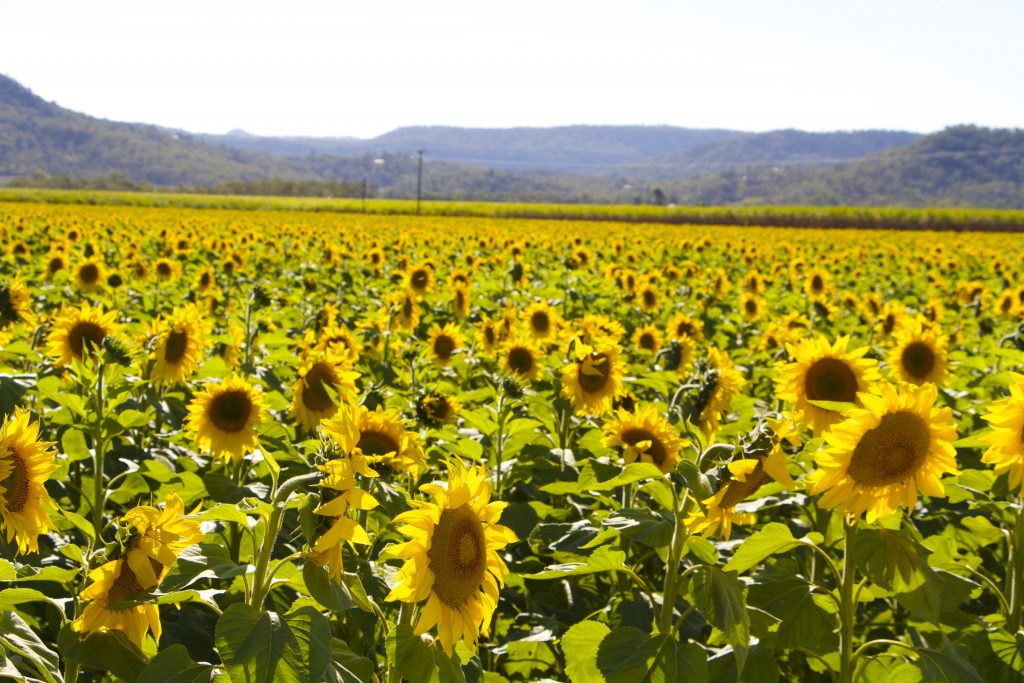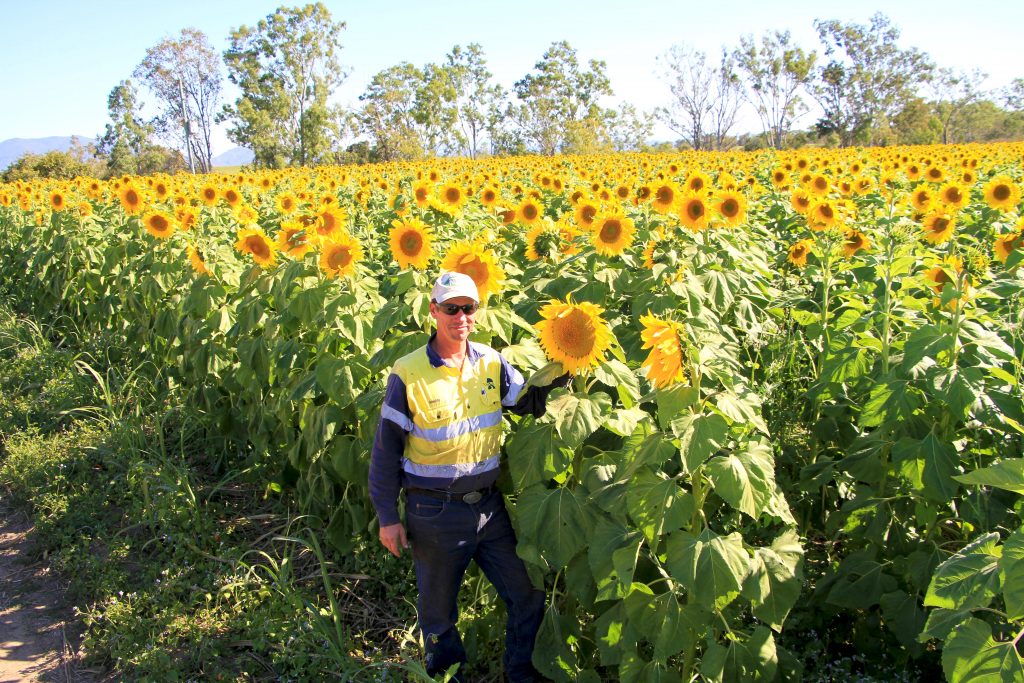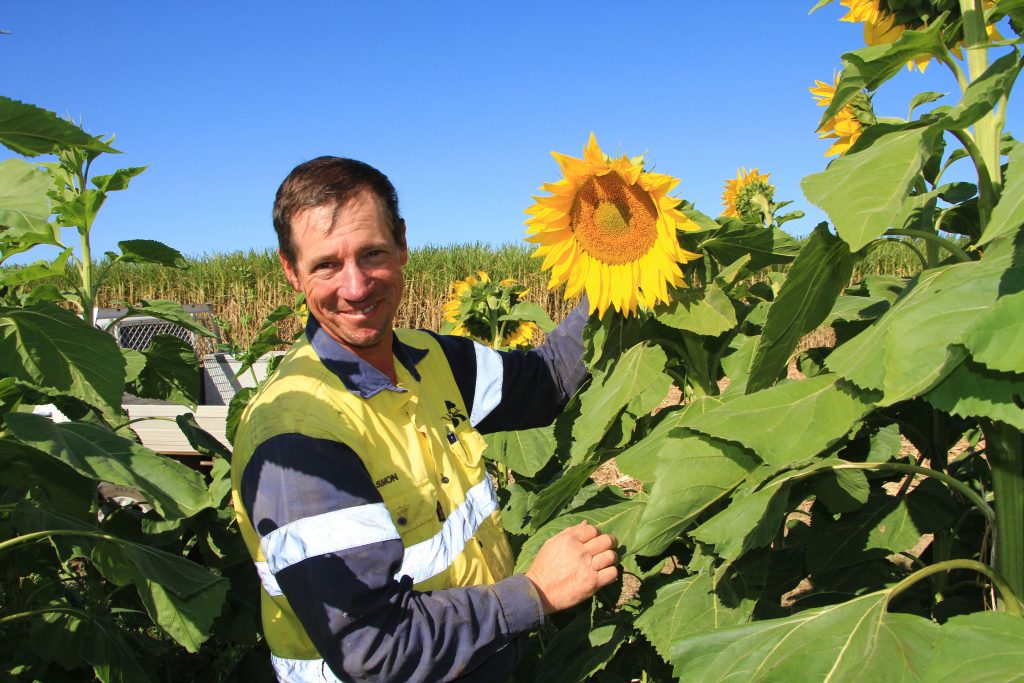


Tackling declines in sugar productivity through innovation and a focus on soil health
“Soil health for us here in Mackay is an issue of utmost importance. We have gotten our soils into a position where they are badly degraded and we need new ideas on how to fix the problem.”
– Simon Mattsson, Marian cane farmer and Nuffield Farm Scholar
Location: Pioneer Catchment, Mackay Whitsunday Isaac NRM region, Central Queensland
Industry: Sugarcane
Issue: Declines in sugarcane productivity
Outcomes: Increased plant diversity, alternative income streams and improved aesthetics on-farm
Simon Mattson has farmed sugarcane at Marian since 1987 and has implemented many practices considered sustainable including controlled traffic and legume break crops. He was awarded a Nuffield Scholarship in 2014 which enabled him to travel extensively overseas to improve his understanding of soil biology, and the balances of fungi and bacteria and microbial activities that are crucial to sustain soil health. Simon considers everything is inter-linked, humans, plants, the soil, the air. He said cane productivity continued to decline, there were always outbreaks of new pests and diseases, and he wanted to investigate other ways of dealing with problems.
Simon trialled a number of species as ‘intercrops’ amongst the cane to see if they improved soil health. The first trial included radish, turnips, chick pea, soybean, common vetch, sunflowers, cereal rye and oats. Ultimately, some of the inter-cropped species did not perform well, sugar content compared well with the cane only treatment but biomass was reduced in the inter-cropped treatments. Simon is trialling some new potential species for intercropping including buckwheat and Brassica species for its ability as a soil biofumigant to reduce nematodes. He has also planted Phacelia tanacetifolia, a plant used extensively overseas as a cover crop and for bee forage. Benefits of Phacelia include its potential to limit nitrate leaching as well as flowering abundantly for long periods that can increase beneficial insect numbers and diversity and can also be useful as a cut flower. Simon is about to harvest a sunflower crop planted around one week after planting his plant cane. The sunflower crop is ready for harvest 14 weeks after sowing, and Simon expects a return of $900-1000 tonne (with a yield of 1-2 tonnes/ ha) on the horse-feed market. He will then plant another sunflower crop to target the birdseed market that can pay up to $1500/ tonne. Sunflowers can reduce soil compaction, improve potassium cycling, and may remove harmful toxins from the soil.
Outcomes: Simon is a passionate advocate for trialling new innovative practices to improve soil health on cane farms which may also help to overcome the ongoing decline in productivity. Field days at his farm have attracted over 100 people. The outcomes are multi-faceted. Because of ongoing poor returns for sugar there is an economic outcome from an alternative income stream and socially the vista of a sunflower crop amongst cane fields is an unusual and attractive sight for travellers and others in the region. The environmental benefits include increased diversity of plant and insect life as well as expected improvements to soil health.
The Future: Simon is leading the way in the sugar industry for trialling new ways to improve soil health in a monoculture farming system. Reef Catchments will support Simon where possible to benchmark and validate his trial work as well as communicating his findings to the industry and other interested parties.
SUNFLOWER BENEFITS:
- Green fallow option against a bare fallow. Good for soil health for maintaining companion symbionts such as mycorrhizal fungi who starve and diminish during bare fallows.
- Breaks disease and pest cycles.
- Tap roots bust hard pans such as plough pans and clay pans for better water infiltration and root exploration of the soil leading to improve water and nutrient use efficiency.
- Using a bird seed sunflower allows for on farm storage and opportunistic trading for best on farm price to end users. Oil seed sunflowers typically are grown under a contract or through an agent.
- Easy to store in on-farm silos.
- Rain during the grain harvest windows presents a much lower risk to crop damage than pulse and cereal crops.
- Can be companion planted with sugarcane offering improved cash flow.
- A 100 -150 day crop suitable for skip row farming.
SUNFLOWER DISADVANTAGES:
- Needs to be sown with a planter, a precision planter is best practice.
- Herbicide weed control options more limited if companion planting with sugarcane. There are however many options if planted alone and plant the cane later. The latter tactic assists in grass weed control later in the cane crop.
- Need a grain harvester and ideally with sunflower trays attached to the front for better seed recovery.
- Although not an issue as yet, native birds will learn to use the crop as a feed source if widely adopted.